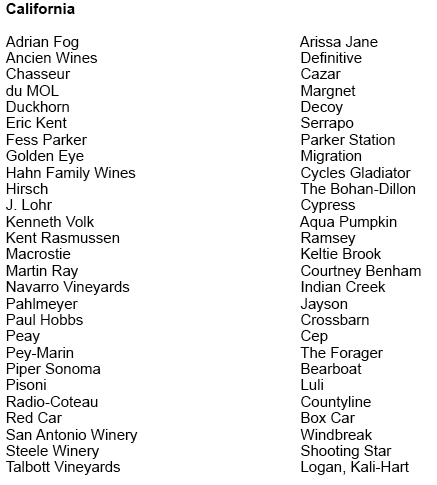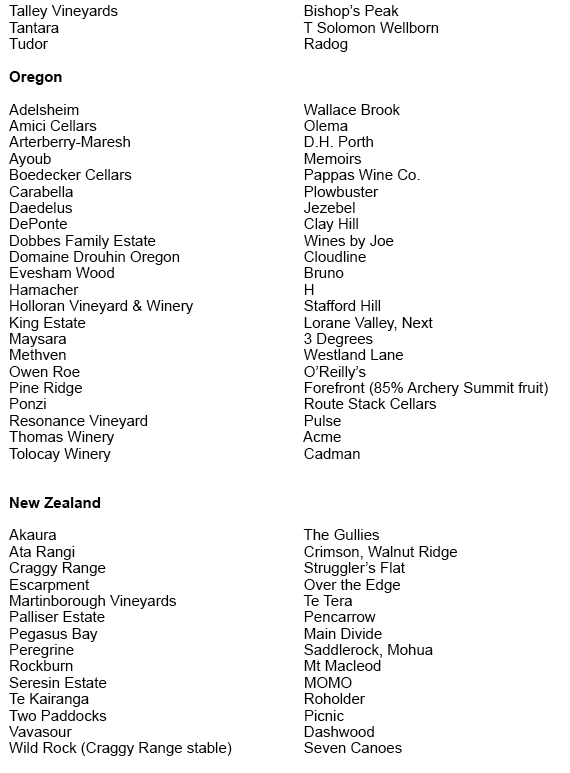Second Labels Now Commonplace
A trend among Pinot Noir producers, both in the United States and New Zealand, has been to release a second
label in the marketplace that takes many forms, but is intended to be a more inexpensive and more accessible
bottling that does not detract from the flagship label. These second tier wines may be crafted from declassified
juice, unfinished rescued wine on the bulk market, or from grape sources not considered to be prime
candidates for the winery’s premium bottlings. Invariably these wines are inferior to the premium primary label
wines, but that does not mean the wines do not have a place. They are usually priced below $25, and are solid
daily drinkers. Some are very good for the money. They are vinified by the same winery staff, but employ less
or no new oak, require less hands-on attention, less aging, and may be blends of different appellations, various
vintages or even different varieties of grapes (a wine labeled “Pinot Noir” in the United States only needs to be
composed of 75% Pinot Noir). Information about second labels is not always readily available, with many top
wineries failing to acknowledge them on their website or marketing materials. Usually one has to look at the
back label to find the primary winery name listed after “Produced and bottled by” in tiny print. Some second
labels are very secretive and it can be near impossible to track down the primary producer. I have compiled a
list of second labels which you can use as a reference. The primary winery name is on the left and the second label is on the right. You may know of others and please let me know and I
will add them to the list. Look for these wines to be significantly discounted in the retail marketplace.


